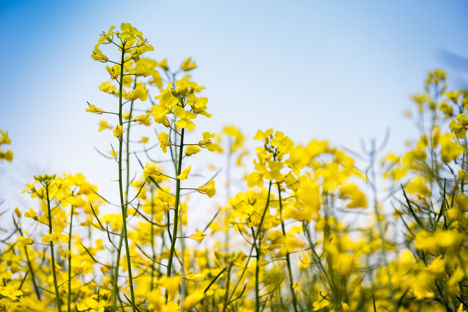
In pictures: the rapeseed oil harvest
We visit a rapeseed producer on the outskirts of Bath to see just how much work goes into producing the coveted golden liquid.
In pictures: the rapeseed oil harvest
We visit a rapeseed producer on the outskirts of Bath to see just how much work goes into producing the coveted golden liquid.
Rapeseed oil has been winning over home cooks and professional chefs for a good few years now. The nutty, grassy flavour and golden colour means it can be used to either cook with or finish dishes in just the same way as olive oil. As spring turns into summer, fields up and down the UK turn a bright, vibrant yellow as the plants that produce this seed begin to flower.
We travelled to one of the many farms in Britain that produce rapeseed oil from plant to bottle to see how these colourful plants are harvested, cold-pressed, filtered and finally bottled. With just a few simple pieces of equipment and lots of time and patience, artisan producers can create an award-winning culinary oil that’s in high demand among foodies across the UK.
The process starts with fields of oilseed rape plants being sown in September. Growing the same crops year after year in the same spot means the soil becomes less and less suitable for farming, so farmers vary the crops they grow, and oilseed rape is often used as the plants can replace nutrients in the soil absorbed by other crops such as vegetables. Once the flowers have bloomed and the seeds have formed, everything is harvested towards the end of summer (depending on the weather). The seeds are then stored, ready to be pressed.
The farm we visited uses the cold-pressing extraction method, which is the most natural way to create rapeseed oil. The seeds are gently squeezed in a press until the oil is released.
The oil is collected in large vats and strained through a simple filtration system to ensure it is bright, pure and clear, ready for bottling. This is usually done by hand on smaller, artisan farms, which means the quality of the oil can be measured from bottle to bottle. Once they’re labelled – also done by hand – the rapeseed oil is ready for sale. It’s a very simple process and not as efficient as other methods but, like olive oil, the results are full of flavour.
Of course, there are parts of the seed which can’t be turned into cold-pressed rapeseed oil (known as 'cake'). But rather than simply wasting this, it can be combined with a few other ingredients to create a highly nutritious animal feed, usually given to cattle. This makes rapeseed oil a very environmentally-friendly product, as nothing goes to waste.
The cold-pressed rapeseed oil being produced by small, artisan farmers is fast becoming an essential item in store cupboards and professional kitchens alike. It takes time, effort and a lot of space to grow the plants, but the finished product offers a true taste of the countryside.


